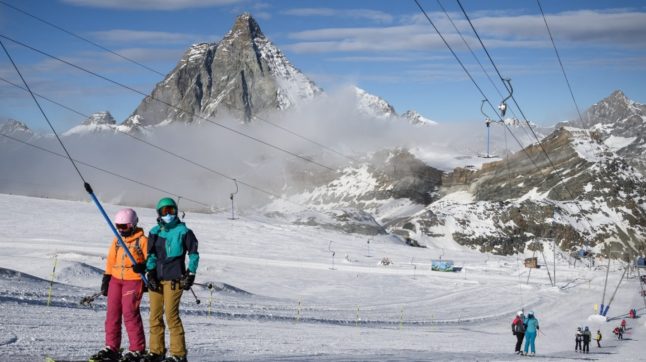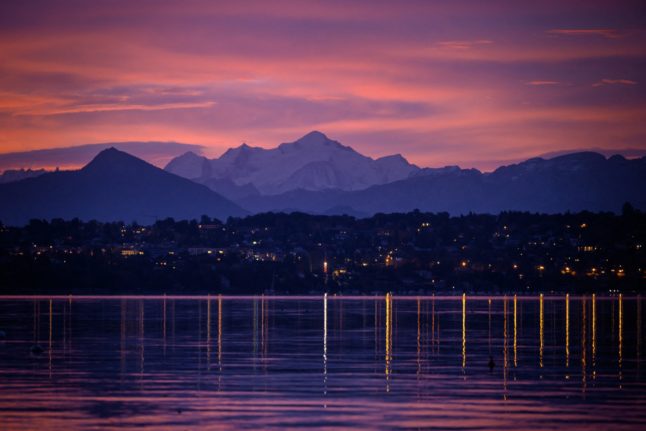February is a traditional ‘family ski month’ in Switzerland, when children get a week off from school and families head to mountain resorts to enjoy skiing and other winter sports.
How successful your holiday turns out to be depends on various factors, the most important of which is the amount of snow cover on the slopes.
What are the skiing conditions right now?
Much depends on where you are going.
As a rule, resorts located at high altitudes (above 1,500 metres, but the higher the better) typically have sufficient snow, while those located below that mark often don’t.
This year is no different.
Very mild air masses reached the Alpine region in January; according to meteorologists, the combination of sun, wind. and mild temperatures has had an impact on the snow (or lack thereof) at low altitudes.
If you are thinking that artificial snow could solve the problem, it is not that simple.
Snow cannons work at temperatures that are just below freezing, but in many low-lying areas they are mostly above that mark.
Where is the snow cover sufficient for skiing —and then some?
If you are heading for the resorts in Valais and Graubünden, for instance, where most ski areas lie at high altitudes, then you are in luck.
According to the official weather service, MeteoSchweiz, “heavy snowfall is expected in the mountains between Friday evening and Sunday morning: 25 to 50 cm of new snow is expected above 1,600 metres, and between 50 and 90 cm above 2.000 metres.”
This is the current situation (that is likely to continue for at least the next few days) on Switzerland’s most popular slopes:
- Zermatt (VS): 105 cm
- Verbier (VS): 112 cm
- Les Diablerets (VD): 126 cm
- Klosters (GR): 188 cm
- Davos (GR): 188 cm
If you want to check the snow cover in the location where you are heading, you can do so on the resort’s website or here.
READ ALSO: How to check if there’s snow on the slopes
Keep in mind that the snow level in the resorts (that is, in villages) is always lower than on the slopes, so the latter gives a better indication of skiing conditions.
What is the forecast for the immediate future?
Accurate weather forecasts can only be given on a short-term basis.
For the next weeks, expect the same conditions at both high and low altitudes as presently.
Ski season in the Swiss Alps usually lasts until the end of March (longer at extreme altitudes), but it is too early to know what lies ahead until then.
READ ALSO: What you should know about skiing in the Swiss Alps this winter



 Please whitelist us to continue reading.
Please whitelist us to continue reading.
Member comments